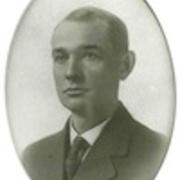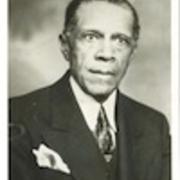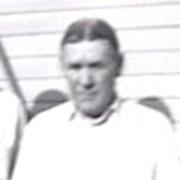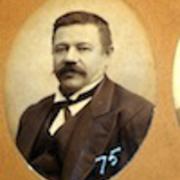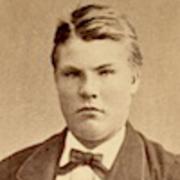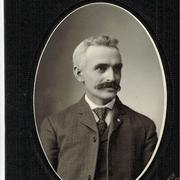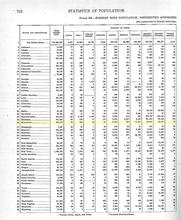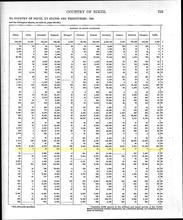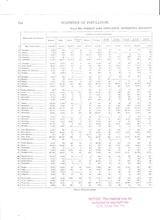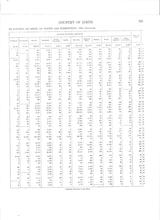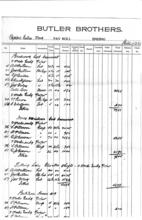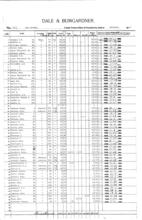
Individual Worker and Immigration Exercise
Students will work with small cooperative groups (2-3) to research a worker or contractor involved in the construction of the Minnesota State Capitol building. Students will utilize the web site “Who Built Our Capitol” at http://www.whobuiltourcapitol.org/ to find the information and resources for the lessons. Using the website, students should click on the “Individual Stories” tab to locate their assigned worker, listed alphabetically by last name, and gather the information needed to complete their worker profile guide. (See attached form.)
Students should then access the Google map at https://mapsengine.google.com/map/edit?mid=zGCv4eqYm26A.k6Ucle3H8Va4 to get a visual sense of where their worker immigrated from as well as where their worker lived in St. Paul. By either clicking on one of the markers that shows where a worker lived or typing the worker’s name in the search box, much of the information requested in the exercise sheet is displayed via the map.
In one variant of this activity, after students find the information on their worker in small groups, they regroup according to the nationality or ethnicity of their workers. The groups check on the map to see the country (or region, e.g. the American South) from which their workers or contractors immigrated and see where they lived in St. Paul and whether they tended to live in one or more specific areas in the city.
NOTE: There is more information available for some workers than others (considerably more for those in the “Featured Biographies” section which re also listed alphabetically with the other workers), so some more detailed questions on the worker sheet are starred as “Extra Information.” and should not be required of all participants.
Ask students to see if ethnic groups settled in clusters. Given the small sample, concentrations of a particular nationality may not be so apparent on this map. However, there were ethnic neighborhoods in late 19th Century and early 20th Century St. Paul neighborhoods. Classroom discussion could focus on the rationale for clustering. Why would ethnic groups settle in common areas? What would be the benefits of doing this? Why might some individual families live outside of ethnic neighborhoods and what would be the advantages and disadvantages of those locations? Do recent immigrants from particular areas or countries live near one another in Minnesota today?
The attached Who Chose Minnesota? PowerPoint presents the "push and pull" concept of immigration with specific U.S. Census statistics on the numbers of Minnesotans born in other countries as of 1860 and 1900. It also shows the total Minnesota polulation in 1849, 1860 and 1900 and includes several math exercises to learn about the growth in the state's population from 1849 to 1900 and the proportion of Minnesotans who were born in other countries. The slides show the top six countries from which immigrants, came as reflected in the 1860 Census, and the 10 contries from which the greatest number of Minnesotans emigrated as of 1900. To see the numbers of Minnesotans who were born in other countries, copies of a 1900 Census table listing the foreign born population by state is attached below (in four pages).
Two samples of payroll records from the Capitol construction general contractor, the Butler Brothers (1905) and a sub-contractor, Dale and Bumgardner (1904) are also attached below. These primary documents show the hours and wags for a variety of trades people who worked on the building of the Minnesota State Capitol.
Students will also share with the whole class, or in pairs or small groups, their own background and where their families are from, along with what brought them to the United States and/or Minnesota - whether generations ago or in their own lifetimes. The Capitol project seeks to raise awareness of the contributions of immigrants, in the building of the Capitol as well as in society, both during the construction period and today. Students can use a wall map or one projected on a screen or diplayed via Smart Board to help tell their stories and show the places where their families lived and traveled over time.
AT BOTTOM OF PAGE: Table 33 from the 1900 Census showing numbers of foreign-born people by state and country of birth. Two samples of payroll records from the Capitol construction general contractor, the Butler Brothers (1905) and a sub-contractor, Dale and Bumgardner (1904). These primary documents show the hours and wags for a variety of trades people who worked on the building of the Minnesota State Capitol.
Student materials
| Attachment | Size |
|---|---|
| 348.76 KB | |
| 72.38 KB |
Objectives
Individual Worker and Immigration Exercise
1. Learn why people immigrate from one place to another
2. Observe how and why immigrants tend to cluster together
3. Gain an appreciation for the contributions of immigrants
4. Relate historical immigrants' travels, work and contributions to contemporary newcomers' circumstances and their own families' immigration stories.
